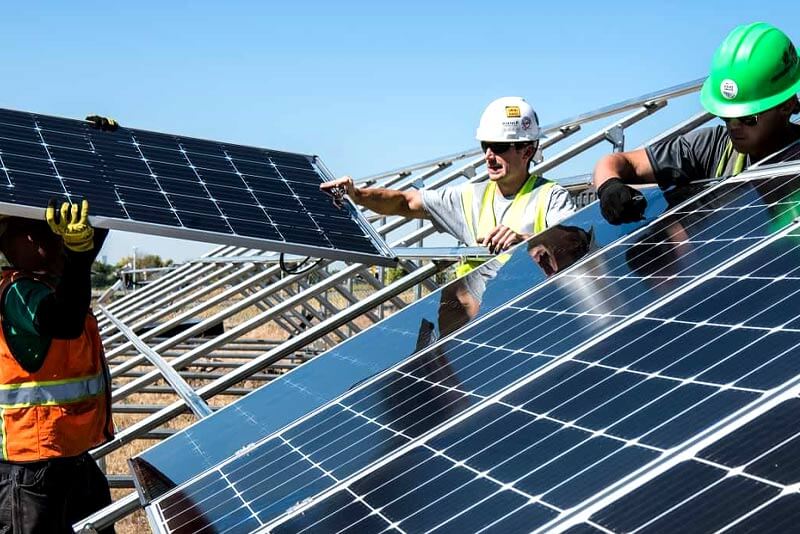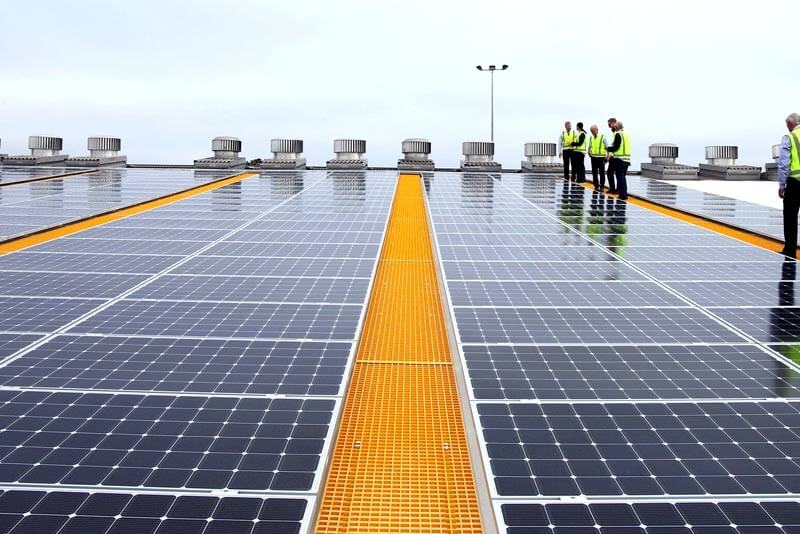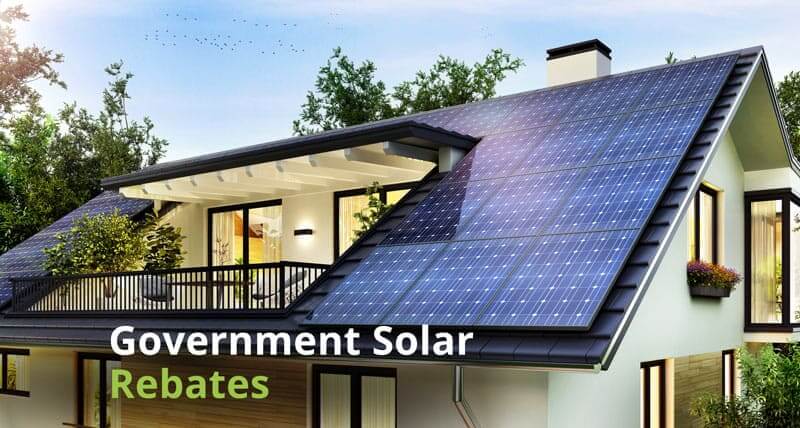Home What Is a Power Purchase Agreement?
What Is a Power Purchase Agreement? (PPA)
Ever pondered the real definition of a Power Purchase Agreement (PPA)? Keen to understand why such a contract was established from the get-go and whether it genuinely provides any benefits?
Power Purchase Agreements are lengthy contracts for renewable energy. They are becoming increasingly popular among large corporations, SMEs, and municipal governments. Why is that? Because they are a dependable method of decarbonizing their electricity consumption and thereby contributing to the energy transition.
So, this article is for you if you have no clue what a PPA is, how it works and what are its benefits. This article will provide an overview of PPAs and their process. Before going into depth, let’s understand the basics of PPA.

Table of Contents
ToggleWhat is a PPA?
A power purchase agreement (PPA), sometimes known as an electricity power agreement, is a contract between two parties: one who creates electricity (the seller) and one that wants to buy electricity (the buyer).
The PPA sets all contractual agreements for the sale of energy between the two parties, such as when the project will commence commercial operation, the plan for electricity delivery, penalties for late delivery, payment terms, and termination.
A PPA is a primary agreement that defines the revenue and credit quality of a generating project, and it is thus an important project finance instrument. There are numerous types of PPA in use today, and they differ depending on the needs of the buyer, seller, and financing counterparties.
What is the purpose of PPAs?
The purpose Of Power Purchase Agreements is;
Project financing
Renewables frequently require a third-party financial source, such as banks, lenders, or credit providers for project financing. But, it is unusual that a third party will lend without security.
A wind or solar PPA gives that certainty in the absence of a government subsidy. When a specific level of confidence in a renewable project is required by a financial provider, a PPA can give that assurance. This is a buyer’s commitment to pay a fixed price per megawatt-hour (MWh) for the electricity produced by the renewable asset over a lengthy period of time (10-20 years).
Hedging
By decreasing cash flow instability, power purchase agreements provide assurance that the project will generate a return on its capital investment upon completion. PPAs allow for the long-term sale of a share of a project’s future energy generation (from 3 – 30 years) to an energy buyer. Before a project begins, stakeholders usually agree on and sign a PPA contract.
Investors want to maximize their risk/reward ratio. Entering into long-term PPA contracts is a strategy for them to manage volatility risk. Power market prices are particularly volatile since they change so frequently (every 5 to 30 minutes).
Project finance on COD
Commercial Operation or COD relates to the date when the renewable asset;
1) becomes fully operational.
2) connects to the grid, and
3) begins producing energy. COD also represents the point at which an off-taker’s obligation to purchase energy commences under a PPA agreement.

Long-term cost predictability
Electricity rates can fluctuate substantially and often, making long-term price forecasting difficult. A power purchase agreement is defined as an agreement to sell X amount of MWh from a renewable project to an energy buyer at a predetermined price.
While this provides the seller with a sure future income stream, the purchaser also assures a specific amount of energy at a fixed cost.
Types of PPAs
They’re known as “Green Power Purchase Agreements” (Green PPAs). There are various sorts of PPAs; learn more about them here.
On-site PPAs
Off-site PPAs
When renewable energy-producing facilities are placed on a client’s property, the PPA is referred to as “on-site.” In this instance, energy operators pay for equipment design, installation, and operations. Clients who are site owners or tenants use the energy generated.
When energy-producing equipment is not installed on a client’s premises, the PPA is referred to as “off-site.” When clients agree to buy a certain amount of green energy produced by a well-defined renewable energy facility from an energy supplier, these contracts are referred to as “physical.”
Benefits of PPAs
Helps boost revenue predictability
When it comes to a renewable asset owner, A PPA helps renewable energy plants to boost their revenue predictability. In the absence of a government incentive, this would not normally be practicable in volatile energy markets. A Personal Protection Agreement:
- Allows lenders to fund their renewable energy projects.
- Risks are reduced by efficiently assigning them among contractual parties.
Provides revenue assurance
For the lender, a PPA provides revenue assurance because a set amount of energy has been sold in advance at a predetermined price. Allow them to declare their contribution to the renewables industry.
Ideal for the long-term
For an energy purchaser, Long-term costs are fixed. Allows a business to (indirectly) sponsor a renewable project while receiving “green qualities” such as Renewable Energy Certificates.
Allows for short-term and long-term energy forecasting
Today’s energy market is beset by variable costs, making long-term energy budgeting challenging. With a Power Purchase Agreement, you and your energy partner agree to a set electricity rate, allowing you to more correctly forecast your energy costs in the short and long term.
Because you agree to a fixed rate in advance, you won’t have to worry about unexpected energy costs or the financial risk associated with traditional power sources.
You get a wide range of options
When it comes to conventional energy providers, you probably just have one option in your area—maybe two if you’re lucky. As a result, it is tough to maximize your possibilities and discover the best deal. You can browse around for a solar energy partner prepared to negotiate the best rates with a PPA. You’re normally sourcing a PPA through a private business, so you don’t have to cope with the constraints of a traditional utility company.
Bankability of the project
Renewable Power Purchase Agreements provide solid contracted revenues from a credit-worthy counterparty, which decreases income volatility for the project and makes debt and equity funding easier to secure.
Provides instant savings
A solar PPA provides instant savings because the kWh price in the contract is lower than the local power tariff. As a result, businesses save money on their total electricity expenditures right away.
Even if a company still uses the local grid to some extent, the PPA lowers the average price per kilowatt-hour. The monthly savings, like the cash saved up front with a solar PPA, can be utilized to pay other operating expenses or reinvested.
Affordable
Australia has among the world’s highest electricity prices, and solar power systems are significantly less expensive than in North America and Europe. A solar array, on the other hand, is a significant investment in a huge commercial or industrial structure.
In Australia, you may anticipate paying roughly $1,000 per kilowatt of installed capacity for systems of this size. This suggests that a 500-kW system would cost around $500,000.
Even if a corporation can afford a solar power system upfront, there is an opportunity cost associated with that expenditure. With a solar PPA, you may utilize the money you would have spent on the project for anything else. Some instances are as follows:
- Direct funding of corporate activities.
- Adding on to a business building to provide room for extra tenants.
Why are PPAs used in renewable energy projects?
Authorities first provide financial incentives for investment, such as grants, to stimulate renewable energy. Renewable assets have gotten less expensive to construct as technology has advanced. This causes a rapid increase in their development.
As a result, authorities begin to abandon support programs. They are either unable to keep up with the finance or no longer perceive the need to provide incentives. Because the market move from subsidized to unrestricted markets has had a significant impact on green investors, they must now seek alternative assets to replace government subsidies.
Synthetic PPA agreement
Synthetic PPAs are extremely adaptable devices that can be used for a variety of applications. They are frequently constructed as the dominant long-term offtake agreement in the Australian market, underwriting the financing of large-scale wind farm projects.
They are usually documented in the form of confirmation under an OTC derivatives master agreement (e.g., the ISDA Master Agreement). In the Australian market, the Australian Financial Market Association produces standards and template documents for the documentation of synthetic PPAs.
Synthetic PPAs are considered financial products, they are subject to additional compliance and licensing requirements under applicable financial rules.
How does a power purchase agreement work?
- First, with a PPA, you can execute, develop, or refinance a project.
- Establish the contract’s structure.
- Make an RFP and look for purchasers.
- Compare the proposals received and negotiate the terms
- Sign the PPA contract.
- Manage your energy sales and risk over the life of your property.
What happens when a PPA ends?
Power Purchase Agreements are typically signed for a period of 12 to 20 years. You’re undoubtedly wondering what happens when that term expires. When a PPA expires, you usually have three choices:
- Negotiate the conditions of the PPA (typically a little higher rate) and continue the cooperation.
- Purchase your facility’s solar power system outright from your PPA provider.
- Terminate the partnership, and your PPA provider will demolish the infrastructure they possess.
Power purchase agreements are rapidly expanding
Green PPAs, which are popular in North America and Scandinavia, are rapidly expanding in Europe, Asia, and Australia. The issue is the lowering cost of green energy generation, the corporate and institutional energy transition trend, and the limitation or elimination of state subsidies for renewable energy.
While Green PPAs were first limited to large firms (Google, Microsoft, BASF, etc.), they are now available to all industrial manufacturers, tertiaries, and municipal governments.
When should you use a power purchase agreement?
Electricity purchase agreements (PPAs) are utilized for power projects when the following conditions exist:
- The project’s projected earnings would otherwise be unclear, thus some guarantee of quantities acquired and the price paid is essential to make the business viable.
- There is the prospect of competition from cheaper or subsidized domestic or international competitors (e.g., a neighboring power plant providing cheaper power) – the PPA provides some certainty of protection from such competition.
- The majority of the product will be taken by one or a few significant clients. A government service, for example, may purchase power generated by a power plant. The government will want to know how much it will pay for its power and whether it will have the first call on that power. The project business will require revenue certainty; and,
- The buyer wants to ensure supply security.
What exactly is a financial power purchase agreement (FPPA)?
A financial PPA (also known as a virtual PPA or a synthetic PPA) enables a firm to purchase renewable energy virtually. It is not necessary to hold the designation of physical energy. This allows corporations, for example, to focus on their “green effect” while receiving renewable qualities without owning the asset.
These “green” extras enable a credit link between the purchaser and the owner of the renewable asset. A virtual PPA has no effect on the purchasing company’s energy supply.
Table of Contents
Toggle




